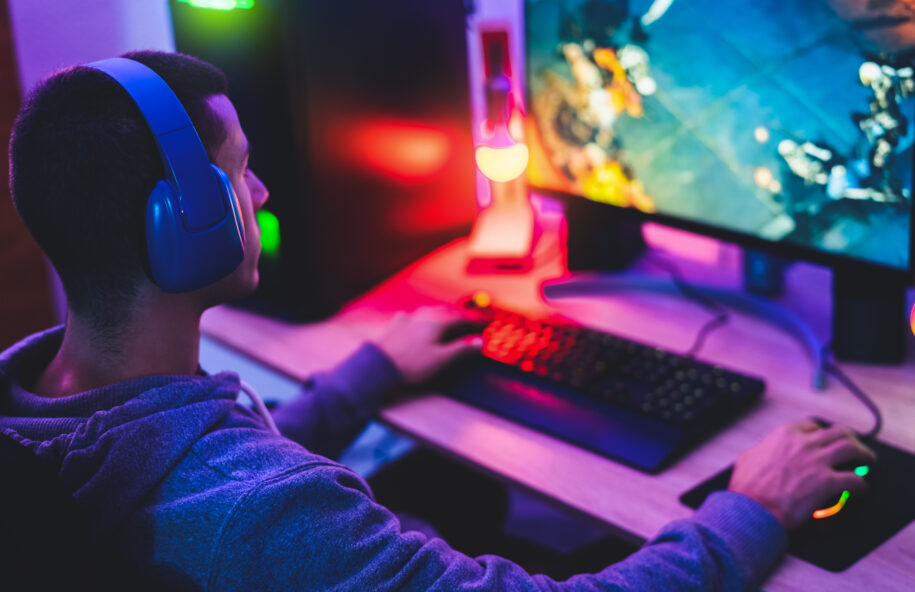
Streaming has taken over as one of the most popular forms of entertainment today. You may be wondering how to get started streaming. Whether you are an aspiring content creator looking to share your gameplay or talent with the world, or simply want to test the waters and broadcast to friends – streaming on PC offers an accessible platform to do so. Equip yourself with the right tools and knowledge to get started streaming with ease. In this guide, we will help walk you through getting set up to stream on your CyberPowerPC.
Table of Contents
Selecting the Right Hardware
Before you go live, it’s essential that you ensure you have a gaming PC that is up to the task of delivering smooth gameplay while also broadcasting. This can be quite demanding, but don’t worry we have you covered. Our gaming PCs are built with the processing power, RAM, and graphics card needed to handle these demands. You’ll also want a fast, reliable internet connection with good upload speeds to maintain stream quality. If you can, use a wired connection over connecting wirelessly.
Choosing a Streaming Platform
There are several popular platforms for streaming games, including Twitch, YouTube, and Kick. Additionally social media platforms like X (Twitter) and TikTok offer streaming although most creators use these platforms as a way to direct their viewers towards one of the larger more comprehensive platforms. Each platform has its own kinds of community and features, so it’s worth exploring to see which one aligns best with your preferences and goals. For example, Twitch is the largest streaming platform and offers robust tools for monetization and audience engagement.
Setting Up Streaming Software
Know that you have a PC that can handle streaming, and you have decided on a platform to stream to, the next step is to install and configure streaming software on your PC. OBS Studio (Open Broadcaster Software) and Streamlabs OBS are two popular choices among streamers due to their versatility and user-friendly interfaces. These programs allow you to capture your gameplay, webcam feed, microphone audio, and utilize overlay elements such as alerts and chat boxes. There’s a lot to play around with here, so take some time to familiarize yourself with the software’s settings and features before going live. Also check out tutorials on YouTube or available across the web for getting things working just how you want them to.
Configuring Stream Settings
Once you have you streaming software of choice set up, you need to take some time to configure some settings. Properly configuring your stream settings is crucial for achieving optimal performance and quality. Key settings to consider include video resolution, frame rate, bitrate, and encoder settings. These parameters will largely depend on your hardware capabilities and internet connection speed, so once again you’ll want to utilize the knowledge of the web to inform your setting decisions. It’s recommended to start with conservative settings and gradually adjust them based on performance and feedback from viewers. Once you are dialed in you won’t need to change much.
Customizing Your Stream
So now you are set up and streaming you games. But streaming is nothing without your personality. Adding a personal touch to your stream is key to attracting and retaining viewers. Consider creating custom overlays, alerts, and scene transitions to enhance the visual appeal of your broadcast. Streaming platforms offer built-in tools for creating and customizing these elements, or you can explore designing your own.
Testing and Tweaking
Before going live, it’s essential to test your stream to ensure everything is working correctly. The last thing you want is people watching you fiddle around with settings. Conduct test streams to address any technical issues or performance bottlenecks before broadcasting to a live audience. Pay attention to factors that will matter to people tuning in to the stream such as audio levels, video quality, and stream stability during testing, and make adjustments as needed.
Engaging with Your Audience
Interaction with your audience is a crucial aspect of successful game streaming. When you first start out you may have no viewers, and that is OK! Get comfortable engaging with the audience, even if they are not there yet. Encourage viewers to chat and participate in the stream by responding to comments, questions, and feedback in real-time. Invite your friends to tune in to you stream to help you get more comfortable interacting with your viewers. Building a strong rapport with your audience is key to fostering a sense of community, and is what will keep many viewers coming back to more of your streams.
Analyzing Performance and Iterating
Finally, the key to improvement is analysis. Pay attention to metrics such as viewer count, chat activity, and viewer engagement to gauge the effectiveness of your content. Experiment with different games, streaming schedules, and formats to keep your content fresh and engaging. Play up your strengths and address your weaknesses. Like anything, over time your practice will pay off and you will improve.
Streaming your games on PC can be a rewarding and enjoyable experience. Equipping yourself with the right tools and knowledge, and following steps outlined in this guide will have you improving your skills. You can build a thriving community of followers and share your gaming passion with the world. Don’t be afraid to find out where hitting that “Go Live” button will take you try out streaming on your CyberPowerPC today!